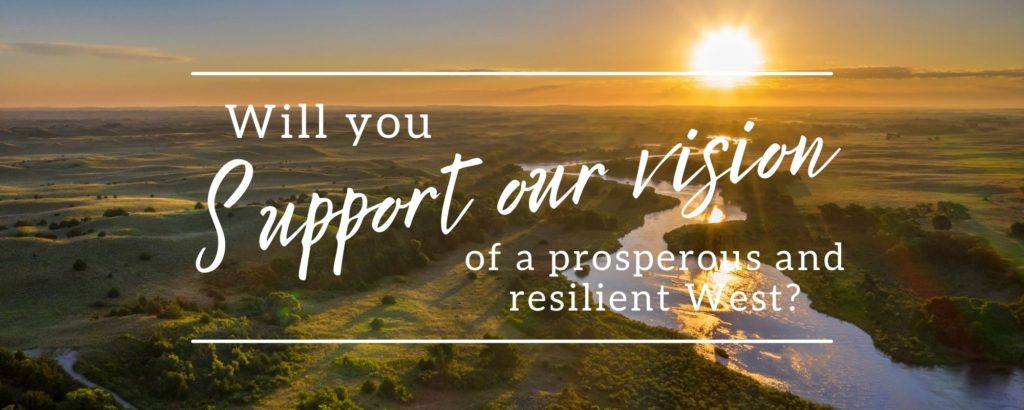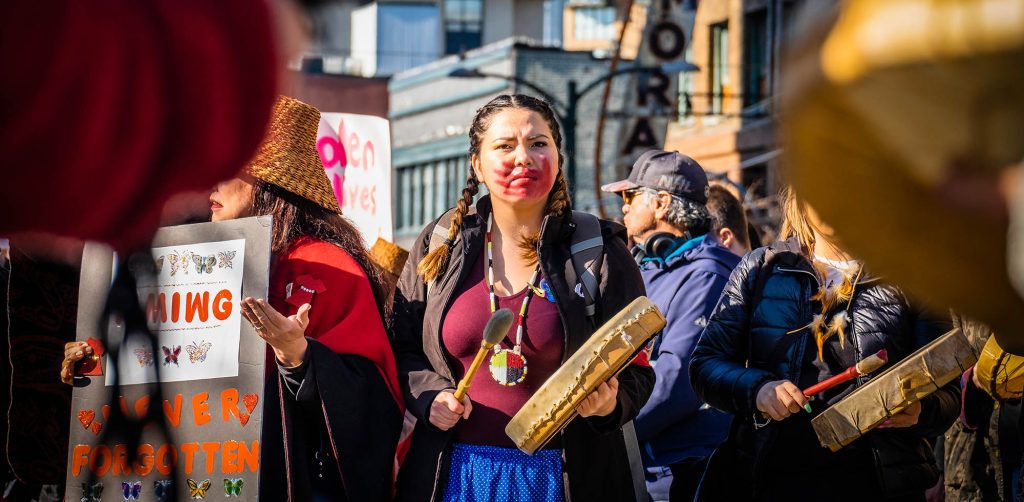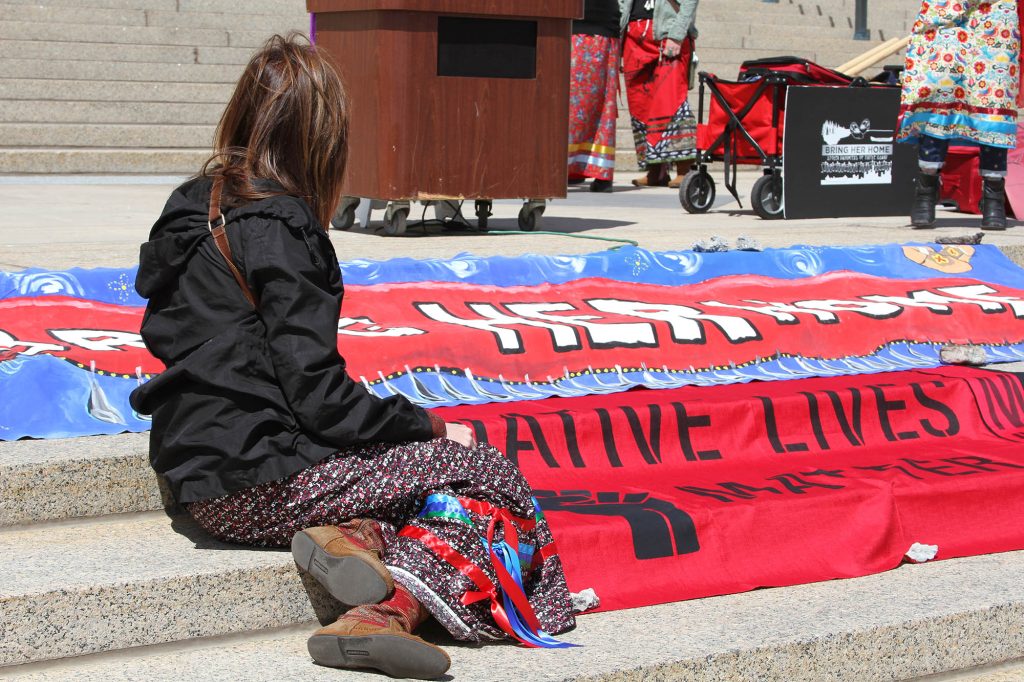Demanding Accountability on the Inaction of Federal Government toward Missing and Murdered Indigenous People
Written by WORC intern Marena “Bright Eyes” Mahto (Mandan, Hidatsa, Arikara)
As an Indigenous Two-Spirit person, hearing about someone’s family member going missing, unfortunately, isn’t uncommon. I remember when my mother told me she would be going up to the Fort Berthold Reservation to help a friend who was going out and searching for Olivia Lone Bear (Three Affiliated Tribes) in 2017. Olivia was a mother to five children who had gone missing in a truck on October 24, 2017; she was found over nine months later within that truck in Lake Sakakawea. In Montana, names like Ashley Loring-Heavyrunner (Blackfeet) and Jermain Charlo (Bitterroot Salish) are associated with the hashtag #MMIW, which has been vital for families to utilize social media as a medium to spread awareness for missing relatives via the Internet. Despite efforts in Congress to address the crisis of Missing and Murdered Indigenous People (MMIP), including the passage of Savanna’s Act and the Not Invisible Act in 2020, this crisis persists.
“My research found that women with a “Native” name or who looked Native, if a picture was provided, did not receive as much attention as a white woman who had gone missing.”
Missing and Murdered Indigenous Women (#MMIW) is an epidemic stemming from over 500 years of colonization that has harmed Indigenous communities across the globe; within the United States alone, Indigenous communities are plagued by high numbers of domestic violence and murder cases. For Indigenous women, this means being amongst the population that is murdered at 10 times the national average. According to the Indian Law Resource Center, more than four in five American Indian and Alaska Native women have experienced violence, and more than one in two have experienced sexual violence. There is no official statistic regarding how many Indigenous women go missing within the United States. Furthermore, when cases of missing women are discussed, they do not receive the same amount of attention as non-native (primarily white) women receive. For example, I have personally conducted research on this topic in 2018 and presented it at a conference at Arizona State University at Tempe; my research found that women with a “Native” name or who looked Native, if a picture was provided, did not receive as much attention as a white woman who had gone missing. On social media, particularly Facebook, comments ranged from “prayers that she is found” to phrases commenting on the inability to read through an article about an Indigenous woman because of an ad block(in this instance, there was an option to skip the ad and read the article) but it has raised concerns about accessibility and urgent response to missing person cases via social media advocacy and awareness for Missing and Murdered Indigenous People. Additionally, many families report the same experiences where law enforcement will dismiss a missing loved one’s case. For example, according to a Montana Public Radio article regarding a rally to raise awareness for Missing and Murdered Indigenous Women in 2019, interviews from attendees who had missing loved ones said that they felt law enforcement had been dismissive of their concerns, with some even stating that “they were told that their daughters were drunk or had run away.”
As a result of this epidemic, Indigenous-led organizations have called upon federal agencies to start addressing cases involving Indigenous people that are either missing or murdered. Federal legislation such as Savanna’s Act and the Not Invisible Act was passed to address the inadequate resources and support needed to address MMIP as a whole. These pieces of legislation are crucial to the resolution of the crisis that has severely affected our Indigenous communities, but they must be funded and fully implemented to be effective. Savanna’s Act was named after Savanna LaFontaine-Greywind, who was an enrolled member of the Spirit Lake Nation; her horrific case sparked the discussion that led to possible resolutions of an epidemic that has negatively affected Indigenous communities across the United States. This piece of legislation was meant to support law enforcement agencies (both federal and tribal) to adequately address instances of missing and murdered Indigenous people. It was also meant to address the lack of statistical data that would determine how many cases of missing and murdered Native Americans there are. The Not Invisible Act aimed to form a joint commission between the Department of the Interior (DOI) and the Department of Justice (DOJ) that focused on reducing violent crime rates against Native Americans. The Commission will also be responsible for gathering statistics that pertain to missing and murdered Indigenous people. Currently, this data is made available through the DOJ website that specifically focuses on Missing or Murdered Indigenous People. Members of Western Native Voice, North Dakota Native Vote, Dakota Rural Action, and the Western Organization of Resource Councils were vocal supporters of these pieces of legislation and lobbied members of Congress from Alaska to Texas to support both Savanna’s Act and the Not Invisible Act. Due to nationwide leadership by Indigenous advocates and support from allies, Savanna’s Act and the Not Invisible Act were successfully signed into federal law in October 2020. While this passage is historic and is meant to work toward justice for families that are affected by the MMIP crisis, agencies like the DOJ and the DOI aren’t implementing the laws as Congress set forth, further endangering Indigenous people.
Never miss an opportunity to make the west even better: receive our action alerts.
According to a recent study from the Government Accountability Office (GAO), there have been several missteps and missed deadlines that both the DOJ and the DOI have missed regarding the new laws. GAO provided a list of recommendations that both departments and associated entities, including the FBI, should follow in order for both pieces of legislation to be fully effective. Most of these recommendations require the Attorney General of the United States to develop strategic plans toward effective methods of gathering statistics that pertain to MMIP, spreading awareness about resources that the general public can utilize regarding missing persons, and providing adequate support to Indigenous-led organizations and entities that want to address MMIP. As of April 20, 2022, there are no federal statistics regarding how many Indigenous people go missing within the United States. Since the passage of both Acts, domestic and sexual assault rates have remained steady within Indigenous communities. Lack of action from federal agencies has clearly led to nothing being done to address the MMIP crisis. It is extremely crucial that the federal government be held accountable for their failure to implement both Acts.
“It is extremely crucial that the federal government be held accountable for their failure to implement both Acts.”
While Indigenous advocates and organizations are working to hold the federal government accountable for their inaction on this issue, allies and supporters can also help by pressuring their members of Congress to seek answers for inadequate agency performance in addressing the MMIP crisis. Calling, emailing, or writing your state’s congressional delegation is an effective method of demanding accountability for the lack of action toward enforcing Savanna’s Act and the Not Invisible Act. You can also spread awareness by writing letters to the editor to local or national news outlets. Even simply starting up conversations about the crisis can be another effective method of keeping the discussion going toward the resolution of MMIP. Talking about this epidemic on social media and sharing missing posters from Facebook groups and pages (Missing and Murdered Indigenous Women USA, Missing and Murdered Indigenous Men USA, etc.), joining and engaging in discussion groups such as Violence Against Native Women, and engaging federal agencies via social media by tagging them in posts, urging them to implement the Not Invisible Act and Savanna’s Act is also useful for spreading awareness and sparking discussion about this crisis. Finally, attending events led by Indigenous advocates talking about MMIP and donating to Indigenous-led organizations or directly to impacted families are other actions that allies and supporters can participate in to address the high rates of violent crime that affect Indigenous communities. Adequately providing support as an ally should not be limited to just one method. It is crucial now more than ever to call upon our federal government to take adequate action toward addressing the crisis of Missing and Murdered Indigenous People.
DONATE TO INDIGENOUS-LED ORGANIZATIONS
CONTACT YOUR LOCAL CONGRESSIONAL DELEGATES AND DEMAND ACCOUNTABILITY FOR THE INACTION ON THE IMPLEMENTATION OF SAVANNA’S ACT AND THE NOT INVISIBLE ACT.
DON’T KNOW WHO REPRESENTS YOU? FIND OUT HERE.
Featured image: Thousands march through Vancouver’s Downtown Eastside in remembrance of missing and murdered Indigenous women and girls – February. 13, 2019 via Shutterstock
Learn more:
Western Native Voice Community Spotlight: Ivan and Ivy Macdonald
Western Native Voice Community Spotlight: Major and Kyra Robinson
Western Native Voice Community Spotlight: Bethyana Pease

Yes, I want to help WORC elevate western voices and hold decision-makers accountable!






